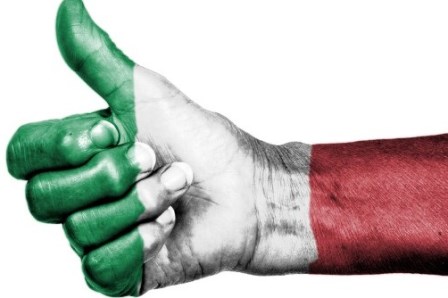
WTI Magazine #55 2015 March, 6
Author : Elda Buonanno Foley Translation by:
Italians are famous all over the world for their food, their style, the "Made in Italy" essence, the beautiful landscapes and the peculiar traditions: in addition to these well known features, however, there are others that seem to be embodied in our colorful personalities. We gesticulate a lot when we talk: there is no doubt about it.
While this statement might ignite a smile or a smirk, it does contain a substantial truth: we, Italians, are famous to reiterate our utterances and emphasize our expressions and emotions with all sorts of body movements. These gestures are innate and are almost felt as an essential appendix or a fundamental addition to our oral ability that , in certain cases, needs to be emphasized with circular movements of our hands or arms. Although this is a characteristic of most Italians (to be noted that not everybody does it on a regular basis), it does require a bit of historical background and a quick overview.
An interesting study by Fabio Caon, who in 2010 published the " Dizionario dei gesti degli italiani: una prospettiva intercutlurale," by Guerra, Perugia, indicates that the gestures can be categorized into four main functions: personal, interpersonal, referential and regulative. In other words, all the gestures we make with our hands, arms, eyes, stomach and legs can indicate personal emotions, reactions, and a full array of feelings (think of the gestures we make to express boredom, fatigue, hunger, happiness, sadness, anger, appreciation, annoyance not to mention salutations and so forth) and they can relate to ourselves or the environment around us. Let's also add that we gesticulate consciously but we also do it unconsciously, not to mention those gestures we personally "customize" for our immediate needs (when we have to show the design, shape, or form of something we have in mind).
Let's point out that the glorious Italian language does have the appropriate words for all these physical and emotional, elaborate expressions: we, sometimes, even overload our language just to make a point and give a perspective. It is when we think that our language misses that very point or does not deliver the whole picture that, we feel entitled and empowered by the energy of our gestures.
Is there an historical root for this peculiar aspect of our generous nature? Indeed: some of our gestures date back to the Ancient Greek and the Roman Empire and have been passed from generation to generation through the Italian classical theater (think about La Commedia dell'Arte and its characters) not to mention great figures of the Italian cinema like Totò (alias Antonio De Curtis, a famous actor and poet) who made his gestures the pillar of his art. Let's also add that before the standard Italian became the single national language of our country, gestures were often used as means of communication and to clarify meanings and interaction among the different people speaking the several dialects all over the regions in our Bel Paese.
In sum, the golden past of our country and language does, in a certain way, justify our use of the gestures. However, as with all the other aspects of reality, it up to us to use them cum grano salis (with a little bit of common sense!)
Alla prossima
EBF



